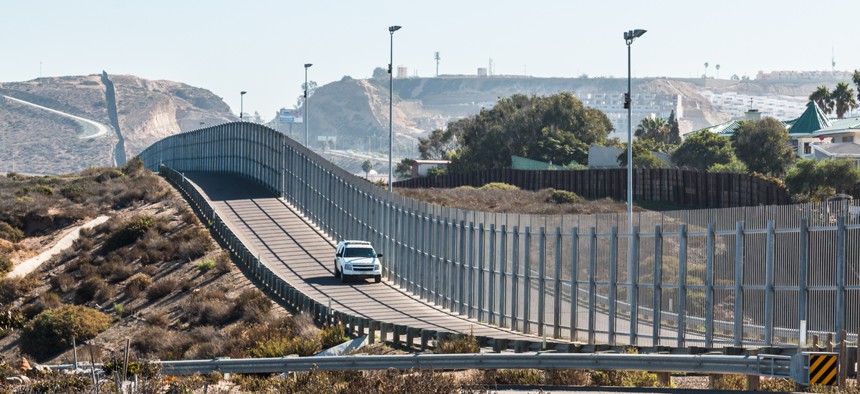
Sherry V Smith/Shutterstock.com
Trump's Border Wall Won't Be a Wall
The latest twist in the Homeland Security solicitation for a border wall: It doesn’t need to be a wall.
The federal government has once again extended its timeline for accepting bids to design and build a prototype for the border wall with Mexico. The latest update to the federal presolicitation, which U.S. Customs and Border Protection first released back in February, marks a change in course for the project as well.
The updated notice indicates some mission drift at the Department of Homeland Security. Now, the agency is asking for two designs: one for a wall, and one for not-a-wall.
On Tuesday, CBP updated its presolicitation to put off the deadline for a formal request for proposals (previously set for today). The notice gave new instructions for companies interested in building President Donald Trump’s border wall. There are now two tracts—“one focused on concrete designs, and one focused on other designs.”
More than 600 companies, most of them small and lacking in significant experience working for the federal government, have attached their names to the list of interested vendors. But the foundation for Trump’s border wall is shifting like the sands of the Chihuahuan Desert. Even as DHS fiddles with the language of its early notice, political maneuvers may be raising the cost of participating in the bidding process higher than any firm can bear.
The updated presolicitation—which now gives no date for a formal RFP notice—comes one day before Trump releases his budget outline for boosting defense spending by $54 billion and slashing domestic spending by an equal measure. Early figures include a $1.4 billion boost to CBP to pay for the border wall, plus $560 million for “high-priority replacement fence projects,” per Politico.
That’s not close to enough money to build Trump’s wall. The president’s own Office of Management and Budget director, Mick Mulvaney, estimates a cost of $8 to $25 million per mile, which would drive the cost of a border wall into the tens of billions. A fence, or a wall-cum-fence, would cost less, but still a lot. To make up the funding shortfall for the wall, Trump has proposed slashing the budgets of the U.S. Coast Guard and the Transportation Security Administration by double-digit percentages, among other agencies. The move has befuddled former top brass at defense and homeland-security agencies and elicited a strong response in New York, where Senate Minority Leader Chuck Schumer has warned that the combined $2 billion in cuts to the Coast Guard and TSA would make the state more vulnerable to threats.
Democrats have responded to the budget provocation in kind: New York City Public Advocate Letitia James says that she will introduce legislation barring any company that participates in building the wall from working on contracts with New York. James also says that she will propose a motion for divestment within the city’s largest pension system from companies that work on the wall.
At the federal level, Democrats are going a step further. Earlier this week, Senate Democrats revived the specter of a government shutdown, this time targeting the funding for the border wall.
“We believe it would be inappropriate to insist on the inclusion of such funding in a must-pass appropriations bill that is needed for the Republican majority in control of the Congress to avert a government shutdown so early in President Trump’s administration,” reads a letter to Senate Majority Leader Mitch McConnell signed by Schumer and four other Senate Democrats.
A protest-fueled divestment movement—to say nothing of the prospect of never working in New York City again—may further dissuade PR-shy global engineering and project-management firms from signing on to design and build Trump’s wall. No global company with the experience likely required to execute such a significant infrastructure project has signaled its interest in the project so far, including Michael Baker International, the firm that built the current U.S.–Mexico border fence.
That’s not to say that the proposal for a border wall is dead on arrival. It’s possible that it could be scaled down to the level of project, or range of projects, achievable by a smaller firm that would not be stung by a divestment movement. “We think it’ll be a mishmash,” Michael Burke, the CEO for the multinational design-build firm AECOM, told CityLab. “Somebody will build something.”
How a firm would handle the almost inevitable environmental litigation is another question. But a border wall as envisioned by Trump was always a virtually impossible dream. This week, even a skimpy border wall—call it a fence-plus—became that much harder to build. Schumer may even find support from Republicans such as Texas Senator John Cornyn, who has expressed deep skepticism about the project. When the RFP for a border whatever finally does go live, the firms who choose to pursue it may be stepping into a war zone between the White House and Congress.
With additional reporting by David Dudley






